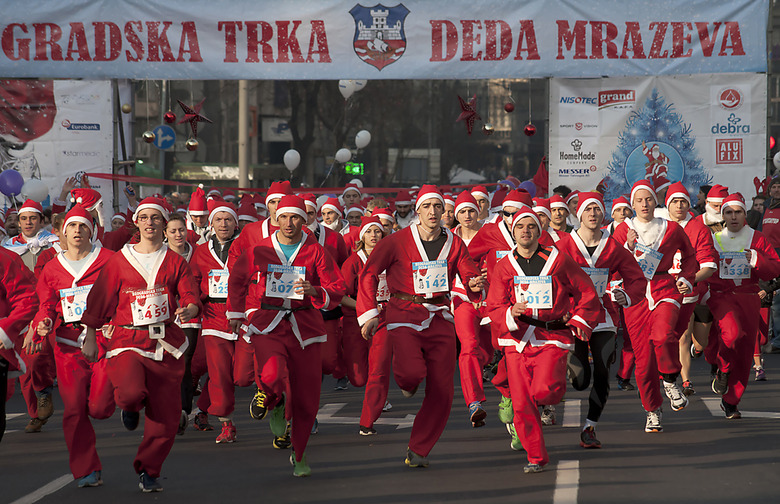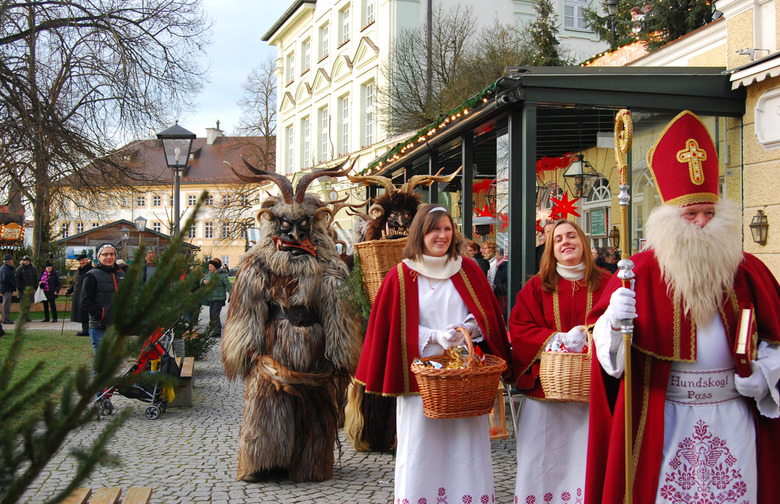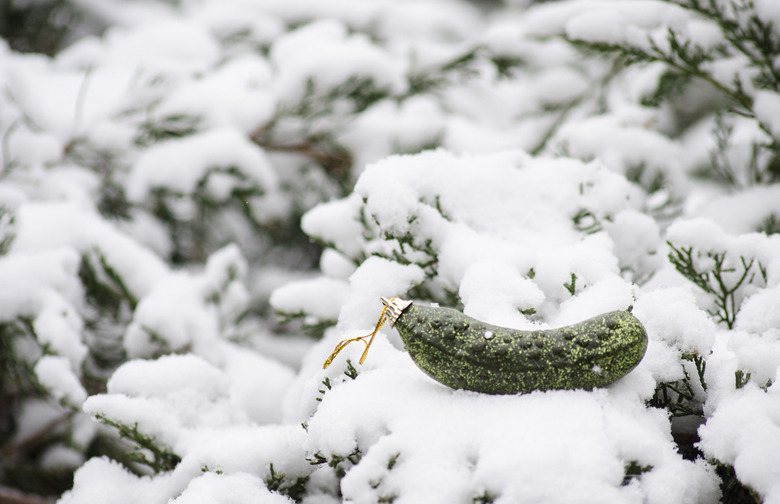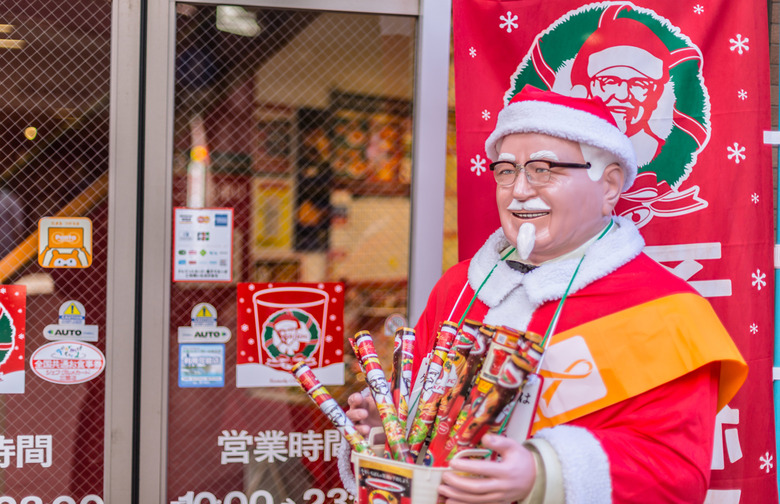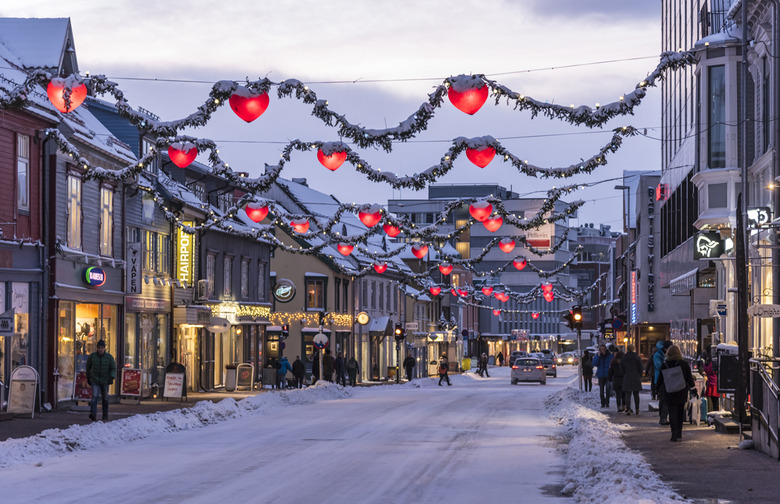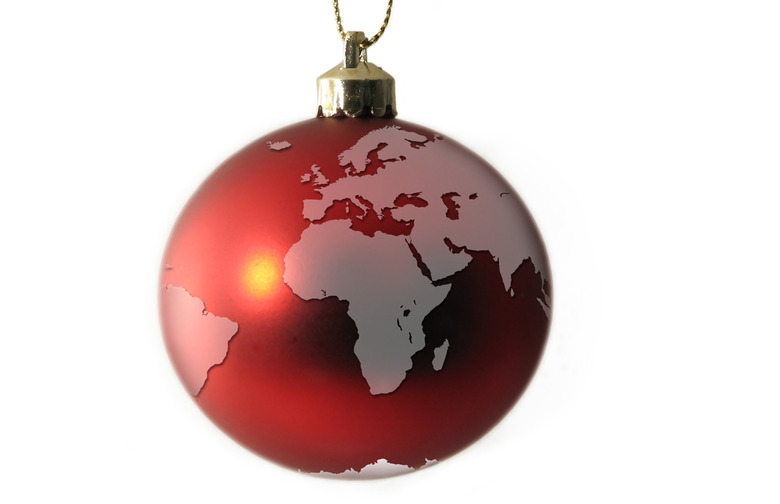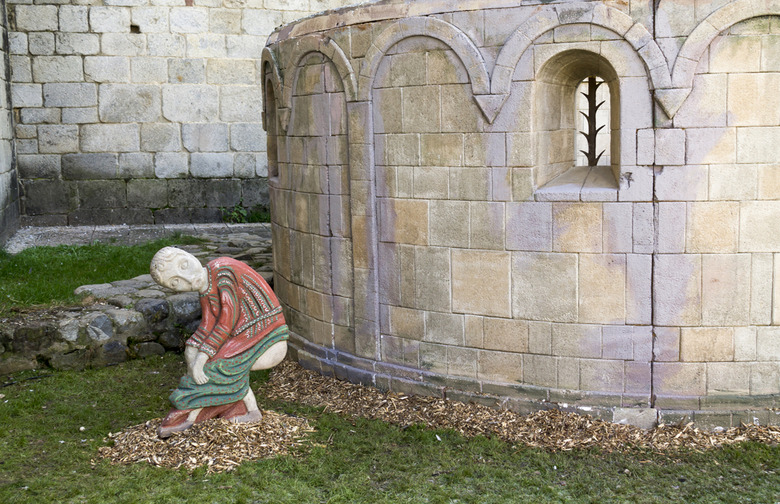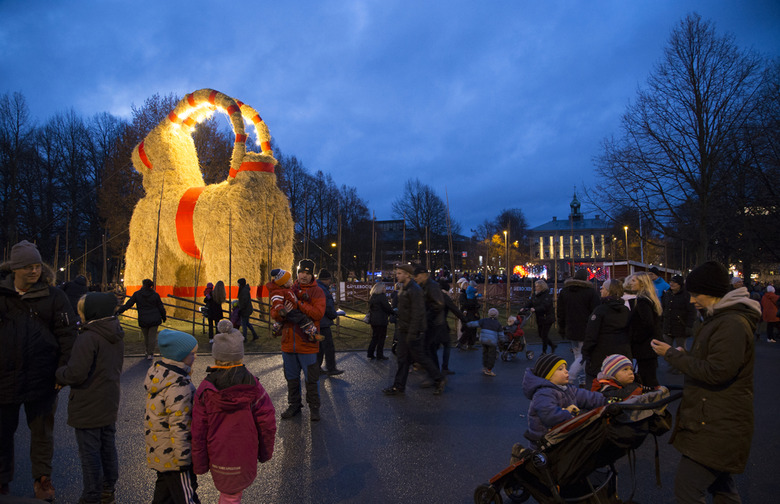The Most Unusual Christmas Traditions Around The World Slideshow
Germany and elsewhere
The scary Krampus is popular in Germany, Austria, the Czech Republic and a few other nations and has even made his way into a horror movie that was released in the States. Some legends of the shaggy horned creature have it that he stuffs naughty children in a sack, steals them and eats them. This likely terrifies all little kids into really, really behaving at Christmastime and gives them nightmares for weeks. Krampus figures also go parading about with good St. Nick in Germany (pictured).
Germany
You likely have heard that German families put a beloved pickle ornament on their tree and that the child who finds the Weihnachtsgurke in the morning is assured of good luck. Versions of the so-called popular German tradition are common on the internet, but The New York Times did some digging, and it turns out the story is a false one. The YouGov polling agency surveyed 2,057 Germans in 2016 and found that 91 percent had never heard of this holiday legend attributed to their country, according to the Times. The pickle Christmas tree ornament, however, has become popular in the U.S. in recent decades.
Italy
La Befana is the witch of Italy, and some women enjoy dressing up as her for the holidays (pictured). And let's face it, Christmas could use more women. According to Southern Italian folklore, La Befana was an old woman who was invited by the Three Wise Men to come visit the baby Jesus with them. She declined, saying she had too much housework. After they left, she changed her mind, but she couldn't find them. So La Befana flies around on her broom on the night before the Jan. 6 Feast of Epiphany, which commemorates the Magi's meeting with baby Jesus, Slate reveals. She leaves candies and small toys in good children's shoes or stockings and the dreaded coal for the bad kids. Families often leave her a glass of wine and some sausage and broccoli.
Japan
This one is a lesson in marketing that hit in a big way. Christmas isn't a national holiday in Japan — only about 1 percent of Japanese are estimated to be Christian — but a bucket of "Christmas Chicken" is the happy meal on Dec. 25. And it's because of a successful "Kurisumasu ni wa kentakkii!" (Kentucky for Christmas!) marketing campaign that was launched in 1974, according to Smithsonian Magazine. When some foreigners couldn't find turkey on Christmas and opted for fried chicken, the company saw this as a prime opportunity and started its first Christmas meal that year: Chicken and wine for about $10, the magazine reports.
Latvia
Typical Christmas traditions in Latvia include groups of mummers and the dragging of the Yule log. The mummers, who are costumed and wear masks of animals and such macabre figures as corpses and death, bring blessings to households they visit, represent fertility and frighten away evil spirits. The tradition was initially tied to the winter solstice, but it has merged with Christmas rituals. The dragging and burning of the Yule log symbolizes the incineration of last year's problems and misfortunes.
Norway
Here's one for those who hate to clean. Some Norwegians hide all the brooms in the house because of an old superstition that witches and mischievous spirits come out on Christmas Eve and steal brooms for riding. Another Christmastime legend involves a little gnome or elf called Nisse, who guards all the farm animals. If Norwegian children do not put out a bowl of special porridge for Nisse, he will play tricks on them.
Philippines
People in the U.S. complain of Christmas creep as decorations go up immediately after Halloween in many stores. But imagine Christmas celebrations lasting for about five months. The Philippines puts everyone else to shame with its Christmas season, which goes from September to January. Decorations, including lanterns, adorn houses, and Filipinos show their Christian devotion by attending nine straight days of mass to mark the birth of Jesus. In the photo, children are seen caroling in the Pacific island nation.
South Africa
For some in South Africa, fried worms are a part of the Christmas feast, Mashable reports. Harvest time for the Mopane worm coincides with the Christmas season. While some worms are preserved for the rest of winter, fresh worms are fried and eaten during the festive season.
Spain
If you're in Catalonia at Christmastime, take a close look at the Nativity scenes there. You may spy an odd figure among the familiar images of the baby Jesus, the Wise Men, the shepherds, dignified Mary and the sheep. He is known as the Caganer, and, well, he's defecating. Figurines of this pooping figure can be found for sale in shops in the Spanish region, and many feature the faces of well-known politicians, soccer players, actors and royalty. The origins of this odd tradition are difficult to pin down.
Spain, part two
The scatological tradition continues in Catalonia with Tao de Nodal (Christmas log), a hollow log with stick legs, a cheery face and a red hat. But, wait, there's more. Like the Caganer, he is about defecation. Spanish children feed the log by giving him nuts and dried fruit. On Christmas Eve, he is beaten with sticks and he "poops" out treats for the kids. After everyone has collected their gifts, the family typically burns him, Slate reports.
Sweden
The Yule goat's origins go back to ancient pagan festivals and the creature's story is tied to the last sheaf of grain bundled in the harvest, which was credited with magical properties. Straw Christmas goats are popular in Sweden, and a giant one, which is set up annually in the town of Gavle, is attacked by arsonists almost every year. The Gävlebocken goat in the town is about 40 feet tall (pictured). Officials have installed cameras and taken other security measures to prevent the torching of the beast, but to no avail.
Venezuela
Venezuelans have a few great traditions, including making hallacas (pictured), a mixture of beef, pork, chicken, capers, raisins and olives that is wrapped in maize and plantain leaves and tied up with string into a parcel and then boiled or steamed. The people of Caracas have developed another tradition that is most charming: Many of the city's residents roller skate to early morning Christmas mass. Some streets are closed to traffic to allow the holy rollers to make it safely to church.
